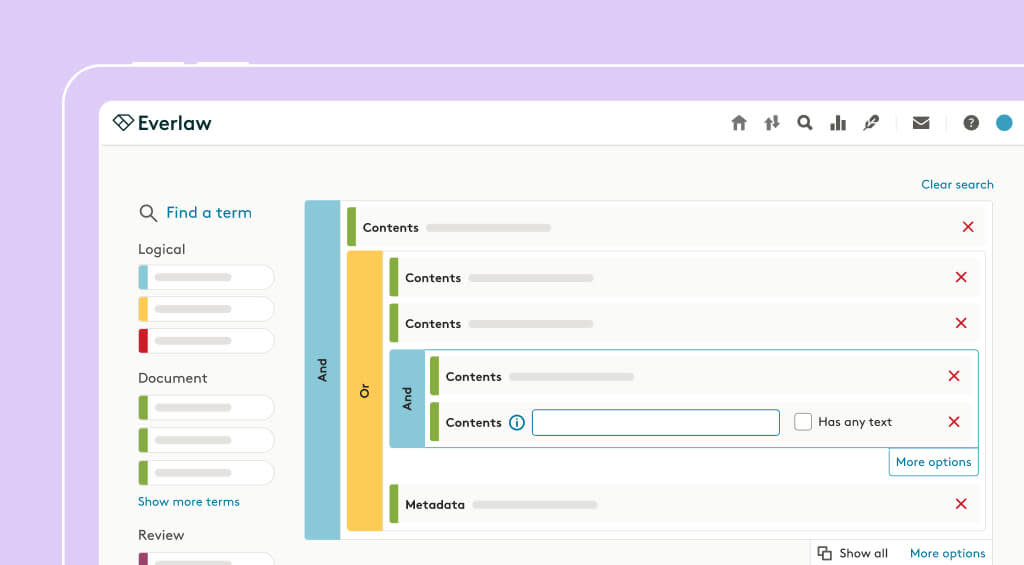A Venti Request for Production
by Everlaw

For a double shot lesson in drafting narrowly tailored discovery requests and proportionality, look no further than a putative class action lawsuit against Starbucks with allegations of violating the Fair Credit Reporting Act. The case below provides lessons in how to draft discovery requests that seek the desired information and are proportional to the merits of the case.
The allegations against the Defendant—Starbucks—involved the use of pre-employment background checks. Multiple discovery requests were before the Court, which were not limited in time or scope. One request sought “All emails, including but not limited to drafts and ‘deleted’ files, that were sent, received or created by any current or former employee containing the terms ‘FCRA’ or ‘Fair Credit Reporting Act.’” The Plaintiff also requested all information on complaints, lawsuits, or regulatory actions, regarding consumer reports, over a 10-year period of time.
Judge Richard Jones noted that Starbucks has 24,000 retail stores in 70 countries. The Court denied the requests for production for being unduly burdensome and overly broad.
Lessons in Drafting Discovery Requests
Federal Rule of Civil Procedure Rule 34(b)(1)(A) requires requests for production to “describe with reasonable particularity each item or category of items to be inspected.” The standard for “reasonably particular” is case-specific. However, a discovery request should be sufficiently defined and limited in scope that it can “apprise a person of ordinary intelligence what documents are required and [enable] the court . . . to ascertain whether the requested documents have been produced.”
The Plaintiff was correct in seeking emails that contained the terms “FCRA” or “Fair Credit Reporting Act,” as those can be terms that are reasonably particular. However, the request was not narrowly tailored to a company that has 24,000 stores in 70 countries.
One strategy for drafting a request for production is to think of the search terms you might use in a database. What are the date ranges? Who are the individuals involved? What is the subject matter?
The request for production identified subject matter, but it didn’t define a scope of discovery. If the request identified stores in the city where the Plaintiff sought employment and corresponding managers, that might have narrowed the request to a reasonable scope. Another strategy would be to request communications between those responsible for all consumer background checks in a specific geographic area.
The big lesson in drafting a narrowly tailored request for production is to write it as if you are preparing a search. This can help keep the request from being overly broad and unduly burdensome.
How to Make a Proportionality Argument
Judge Richard Jones cited Starbucks’ global footprint as part of his analysis. There are also over 254,000 current Starbucks employees. If every employee averaged sending and receiving 3 gigabytes of email a year, that would total 762 terabytes of email annually worldwide. If limited to the United States, there are approximately 157,000 employees and possibly 471 terabytes of data. A single terabyte, if printed as paper, would take approximately 50,000 trees.
A company such as Starbucks making a proportionality argument against conducting a search of all company email in the United States would first want to define the number of custodians, the volume of email, size of the dataset, and an estimate for both time and cost to review. The numbers presented to a court can be projections, but must be based in fact.
In our hypothetical, a court could find that 471 terabytes of data is not proportional to the case and require the requesting party to narrow the discovery request (think of reviewing paper from 23,550,000 trees). Alternatively, if the dataset were narrowed with the search terms “FCRA” or “Fair Credit Reporting Act,” the court may want to know the size of the reduced dataset to continue the proportionality analysis.
If the dataset is a reasonable volume to upload into Everlaw, attorneys can review a sample of the data. Analytics can provide statistics on the size of the dataset being reviewed, time spent on review, review progress, and provide an estimated time to complete the document review. This information could be extrapolated to the data that was not loaded for review, to provide the court a projection on the amount of time needed for document review.
Narrowly Tailored Requests with Proportionality
Preparing narrowly tailored discovery requests is an element of proportionality: the goal is to get information that supports your claims or defenses. Drafting requests for production requires lawyers to determine what data they want from the producing party. Preparing requests with search terms in mind helps attorneys focus on information related to the merits of the lawsuit with requests that are narrowly tailored.

Everlaw’s advanced technology empowers organizations to navigate the increasingly complex ediscovery landscape, tackle the most pressing technological challenges, and chart a straighter path to the truth—transforming their approach to discovery, investigations, and litigation in the process.